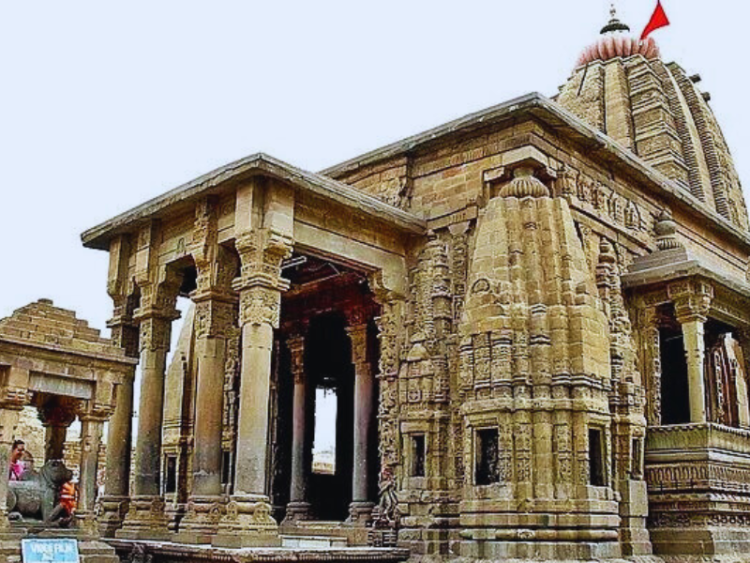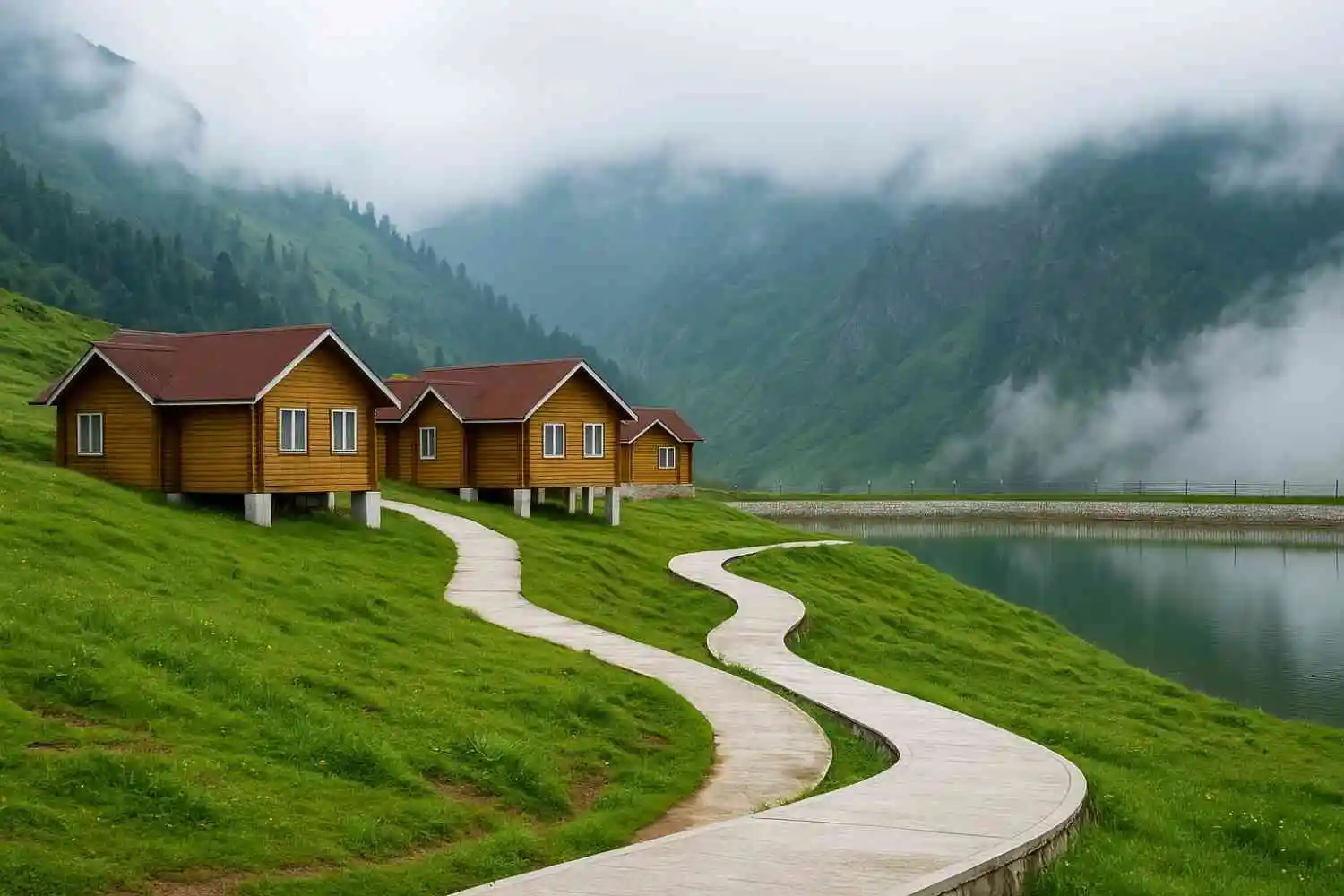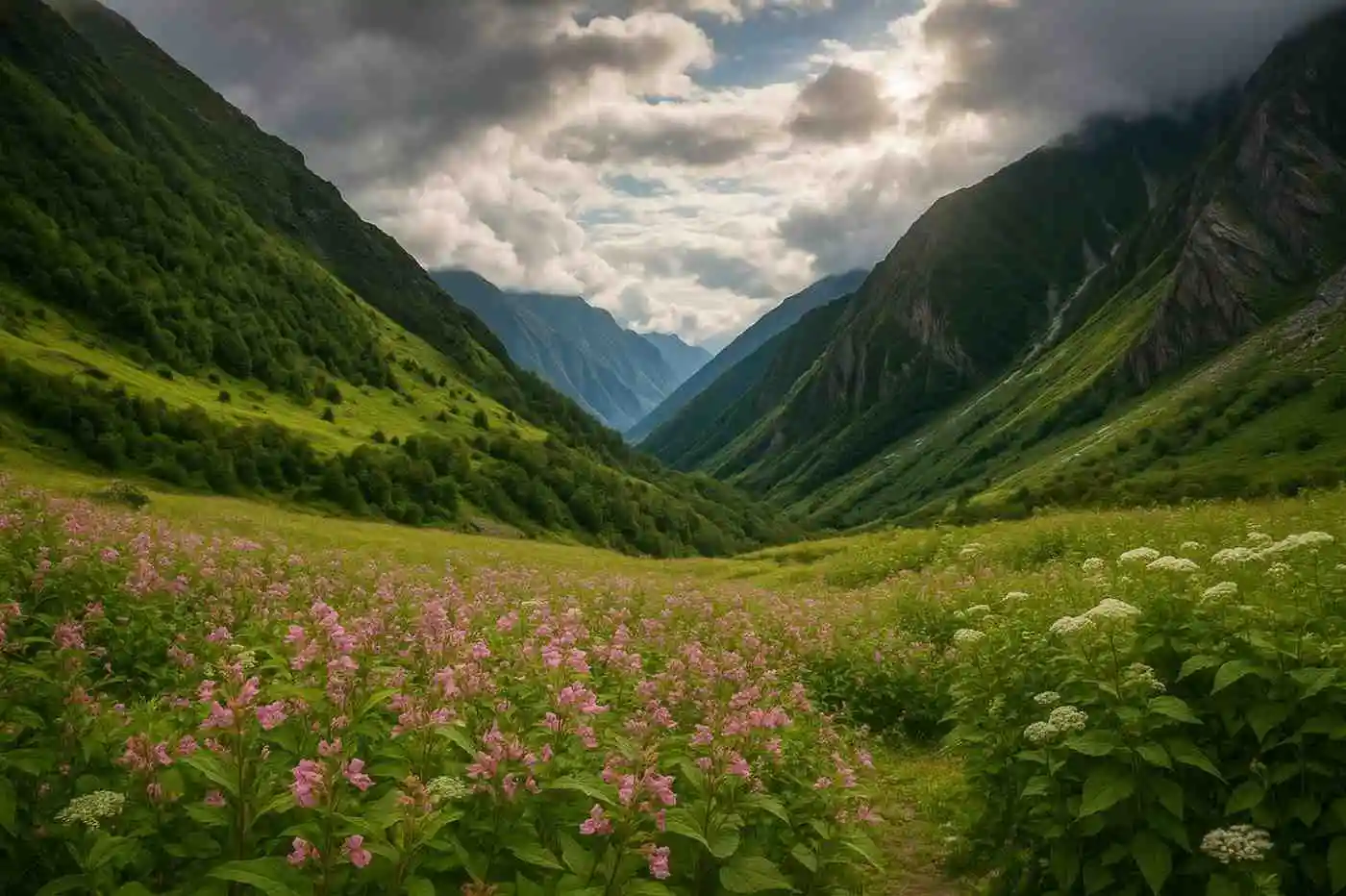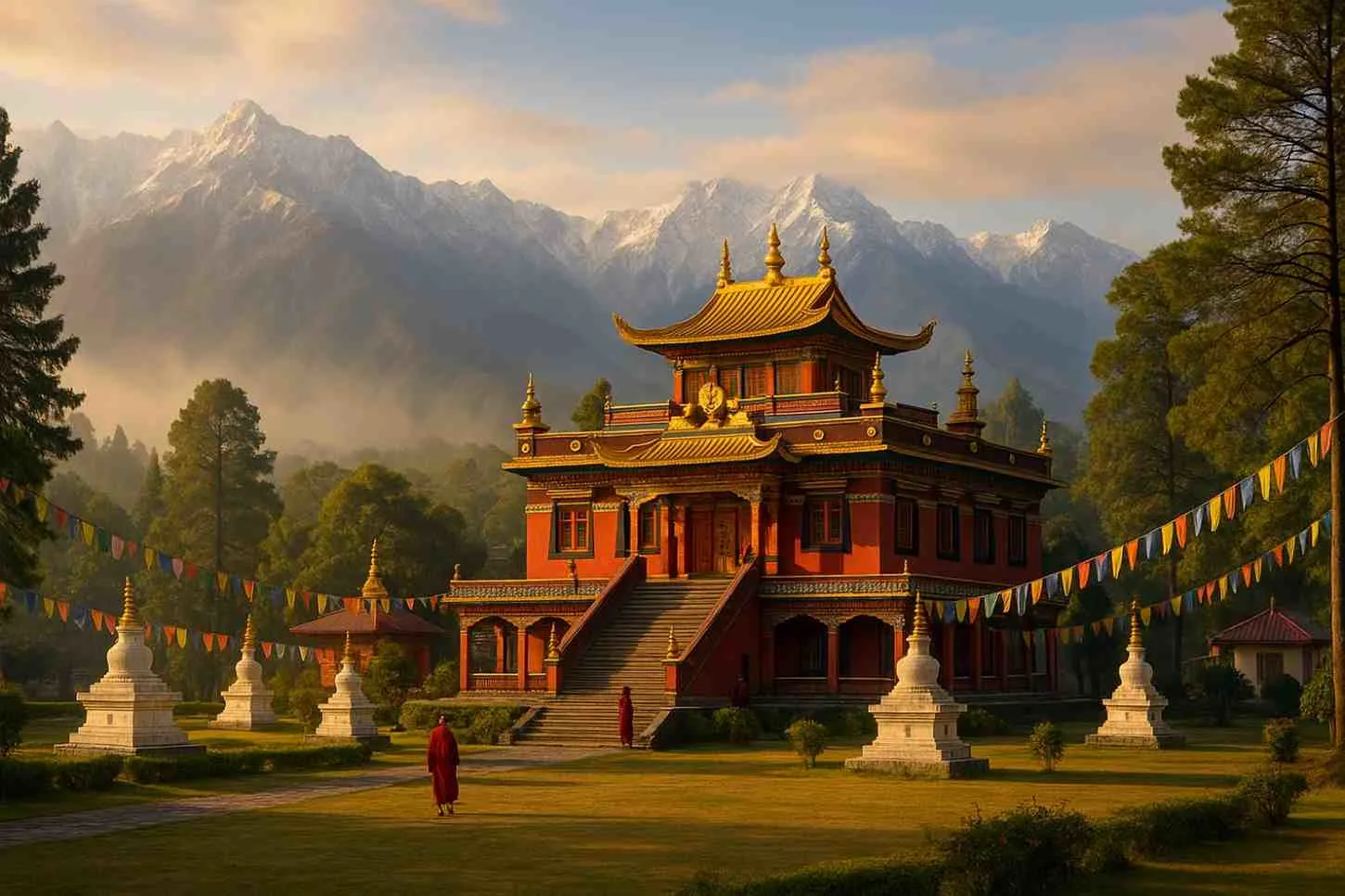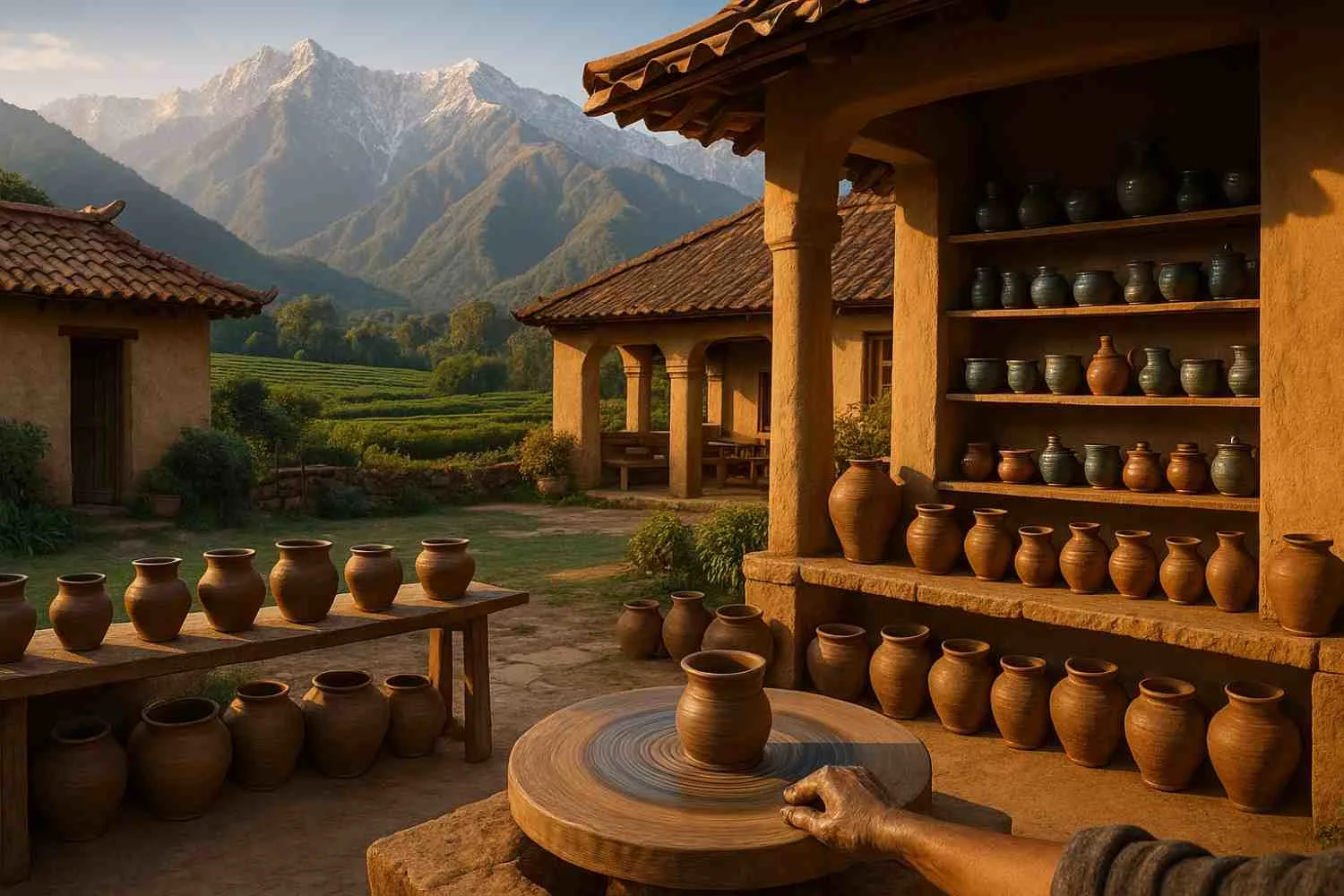Tucked inside the calm Dhauladhar range of the Himalayas, the Baijnath Temple in Himachal Pradesh is a timeless wonder of spirituality, architecture, and history. Dedicated to Lord Shiva, this ancient temple is evidence of the continuing trust and loyalty that have molded India’s cultural terrain. Visiting Baijnath Temple is not only a pilgrimage but also a trip into the Himalayan spiritual core, where the divine encounters the magnificent.
History of Baijnath Temple
The story of Baijnath Temple begins in 1204 CE, when two local merchants—Ahuka and Manyuka (often rendered as Kirti/Manyuka in legends)—built this Shaivite shrine on an older sacred site. An inscription records their work, and over the centuries, the temple has been protected and revered, now overseen by the Archaeological Survey of India (ASI). The temple’s very name gave the town its identity. Wikipedia
Architecturally, Baijnath is classic Nagara style—North India’s temple idiom characterized by a soaring shikhara (tower), a sanctum (garbhagriha), and pillared halls. Its crisp stone craftsmanship and restrained ornamentation mirror the period’s design language and Himachal’s austere, mountain-suited aesthetics. The temple also surfaces in local chronicles of the Kangra Valley, and in regional lore about Shiva’s compassion and the healing grace of Vaidyanath. Wikipedia
Baijnath Temple Religious Significance
Vaidyanath means “divine healer,” and devotees come to Baijnath seeking physical and spiritual well-being under Shiva’s care. While many travelers ask whether Baijnath is one of the twelve Jyotirlingas, the canonical list places the Vaidyanath Jyotirlinga in eastern India; even so, Baijnath enjoys Jyotirlinga-like reverence in Himachal, with rituals and daily worship reflecting that stature. Major observances include Maha Shivratri, Makar Sankranti, and Vaisakha Sankranti, when the precinct thrums with hymns and conch-shell calls. Wikipedia+1
Local legends connect the site with Ravana’s devotion to Shiva. Many versions recount how the linga came to rest here when the demon-king—unable to carry it onward—set it down, sanctifying the spot forever. Whether approached as scripture-inspired lore or as a cultural memory, the narrative adds a powerful devotional layer and helps explain why Baijnath’s rituals and etiquette feel both intimate and awe-filled.
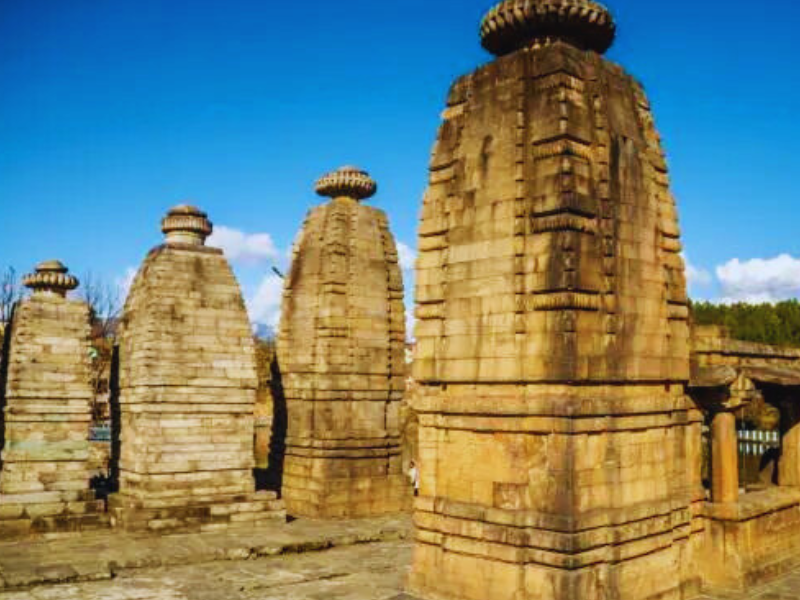
Baijnath Temple Architecture and Design
Walk through Baijnath’s gateway and you step into a stone-crafted world where every surface whispers a fragment of Himalayan art history. The shikhara—tall and tapering—anchors the skyline, while the mandapa (pillared hall) leads you into the garbhagriha where the Shiva linga resides. The stone carvings are measured rather than crowded, with bands of motifs and geometric detail that reward slow, attentive viewing.
Around the main temple, you’ll notice subsidiary shrines, platforms, and an open courtyard blessed with views of the Binwa River, a tributary of the Beas. This riverside setting strengthens the site’s tirtha character—a crossing place between the earthly and the divine—while the mountain air keeps the complex feeling contemplative even on busy days. Compared with other North Indian styles, Baijnath’s profile is leaner than, say, the more elaborate central-Indian spires, yet unmistakably Nagara in grammar.
Also Read: Chintpurni Temple, Himachal Pradesh, A Shakti Peeth in Una
Baijnath Temple and the Two Brothers
Devotement and commitment abound in the account of the two brothers, Ahuka and Manyuka, who erected the Baijnath Temple. According to legend, the brothers were childless and yearning for a son very much. Seeking a boon, they asked Lord Shiva and promised, should their request be fulfilled, to erect a temple. Their wishes were granted, and they came upon blessings—a son. In thanks, they built the Baijnath Temple, dedicated to Lord Shiva.
The brothers not only visited but also significantly helped the temple to be built. Every stone of the temple reflects their great awareness of Vedic architecture and relentless loyalty to Lord Shiva. The temple is evidence of their devotion and helps to contribute to the spiritual legacy of the area.
King Sansar Chand and the Baijnath Temple
One of the most well-known supporters of the Baijnath Temple was King Sansar Chand, the Kangra kingdom monarch. Under his rule in the late 18th and early 19th centuries, he cared about the maintenance of the temple and actively helped to preserve it. A devotee of Lord Shiva, Sansar Chand gave various gifts to the temple, including money for ceremonies and building of other buildings inside the complex.
The Baijnath Temple developed under King Sansar Chand’s sponsorship as a prominent religious center drawing pilgrims and academics from all around. His efforts guaranteed that the temple stayed a hive of cultural activity and prayer for the area.
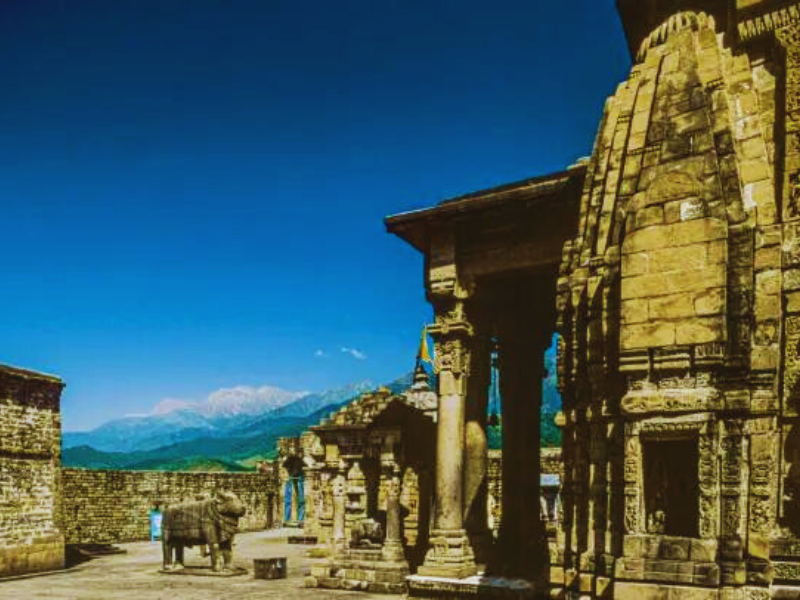
How Baijnath Temple Survived the Earthquake of 1905
The fact that the Baijnath Temple survived the catastrophic earthquake of 1905 is among its most amazing features in the past. Striking the Kangra Valley with enormous power, the earthquake destroyed numerous structures and temples in the area. But the Baijnath Temple came out mostly unharmed, evidence of the architectural wonder that is engineering.
Though it also refers to the sophisticated architectural methods used by its architects, the temple’s longevity is sometimes ascribed to the heavenly protection of Lord Shiva. The temple’s strategic placement on firm ground and its substantial stone construction helped it resist the shocks that knocked down many other buildings.
Best Time to Visit Baijnath Temple
For clear skies and comfortable temperatures, the sweet spots are March–June (spring into early summer) and September–November (autumn). Winters can be charmingly crisp, while monsoon (July–August) brings lush hills and occasional showers. If you crave the fullest devotional energy, time your visit for Maha Shivratri, when the temple hosts special poojas, music, and a sea of lamps—an unforgettable spiritual experience. Incredible India
Baijnath Temple Travel Tips
Dress code & etiquette:
Dress modestly (shoulders/knees covered). Remove footwear before entering the sanctum, and keep voices low.
- Photography:
Generally allowed in the outer complex. Check signs or ask a priest before shooting within the garbhagriha.
- Food & stays:
Palampur has a good spread of cafés, dhabas, and mid-range hotels; Baijnath town offers simple stays and eateries close to the temple.
- What to carry:
A light shawl in the evening, refillable water bottle, a small offering (flowers/bilva leaves), and comfortable walking shoes.
How to Reach Baijnath Temple
1. By Road:
Baijnath lies on NH 154 (Pathankot–Mandi). It’s about 16 km from Palampur, ~51–56 km from Dharamshala, and ~53–54 km from Kangra. Regular HRTC and private buses, as well as taxis, ply these routes, and the drive treats you to tea gardens and pine-scented valleys.
2. By Train:
The nearest stations on the Kangra Valley narrow-gauge line are Baijnath Paprola (BJPL) and Baijnath Mandir (BJMR), with BJPL and BJMR just ~2 km apart on the same stretch—handy for local access. For broad-gauge connections, most travelers route via Pathankot/Pathankot Cantt and transfer to the scenic toy train or to road transport. India Rail Info+1
3. By Air:
The closest airport is Gaggal (Kangra) Airport near Dharamshala; from there, it’s a beautiful road journey into the valley. Incredible India
4. Local Transport:
Auto-rickshaws and taxis are readily available in Baijnath/Palampur. If you love slow travel, the Kangra Valley train is a nostalgic ride through fields and foothills.
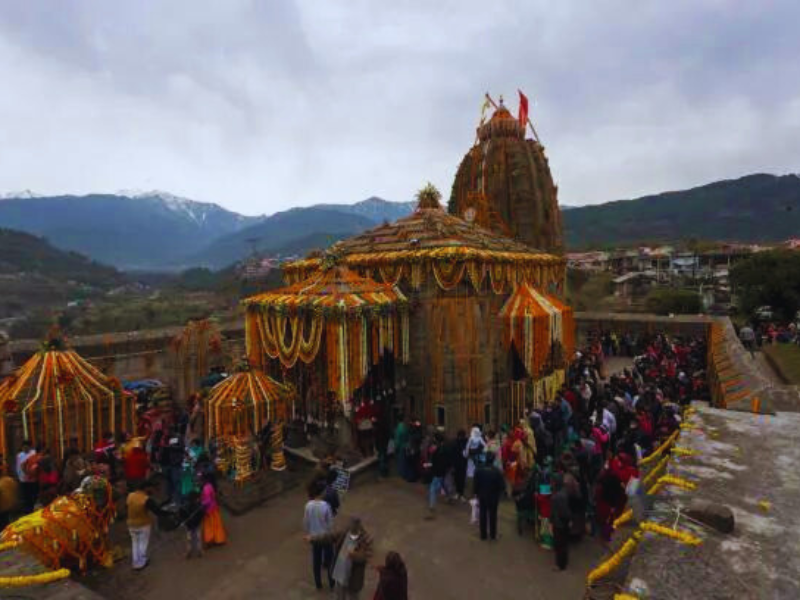
Baijnath Temple Nearby Attractions
Tashi Jong Monastery: A serene Drukpa Kagyu Buddhist complex known for its monastic crafts and prayer halls.
Bir Billing: India’s paragliding capital; Bir (landing site) and Billing (take-off) make a stunning add-on to your temple day. Distance from Baijnath is roughly a local drive—many travelers pair the two. Incredible India
Palampur Tea Gardens: Palampur Tea Gardens Stroll through neatly trimmed estates and sip fresh Kangra tea.
Andretta Village: An artist colony famed for Andretta Pottery and rural Himachal life.
Baijnath Temple Cultural & Festive Events
Maha Shivratri is the soul of Baijnath’s festival calendar—long lines of devotees, extended temple hours, elaborate abhishek rituals, and devotional music creating a luminous, communal faith experience. Other auspicious days include Makar Sankranti and Vaisakha Sankranti, each drawing steady footfall and local fairs with folk performances, prasad stalls, and craft sellers. Wikipedia
Conclusion:
The Baijnath Temple represents the rich cultural and spiritual legacy of Himachal Pradesh more than only a site of prayer. For those looking for a closer relationship with the holy, this must-visit location boasts architectural genius, historical history, and theological relevance. Whether your interests are history, Lord Shiva, or peace-seeking travel, the Baijnath Temple provides an experience that spans time and geography that will inspire respect and wonder.
Frequently Asked Questions (FAQ)
Where is Tashi Jong Monastery located?
In Tashi Jong village, near Palampur, Kangra District, Himachal Pradesh, India.
How far is Tashi Jong Monastery from Palampur and Dharamshala?
About 15 km from Palampur; roughly 60–65 km from Dharamshala (road-dependent).
What is the altitude of Tashi Jong Monastery?
Approximately 1,250–1,350 m above sea level (similar to Palampur’s elevation).
How can I reach Tashi Jong Monastery by road or train?
Road: Via NH-503 through Palampur/Baijnath; local turn-off to Tashi Jong.Train: Nearest major railhead is Pathankot (~120 km), then road transfer.
Is Tashi Jong Monastery open to visitors throughout the year?
Yes, year-round, subject to weather and monastery schedules.
What is the best way to reach Tashi Jong from Palampur?
Taxi is quickest; local buses also ply but are slower with more stops.
Does Tashi Jong Monastery charge any entry fee?
No, entry is generally free.
What are the visiting hours of Tashi Jong Monastery?
Typically 8 AM – 6 PM (confirm on arrival; prayer times may limit access to certain halls).
When was Tashi Jong Monastery established?
In the late 20th century.
Who founded Tashi Jong Monastery?
The Eighth Khamtrul Rinpoche is credited with its founding and guidance.
What is the historical significance of Tashi Jong Monastery?
It’s a key exile-era seat preserving Drukpa Kagyu teachings, arts, and community life.
Which Buddhist lineage or sect does Tashi Jong Monastery belong to?
Drukpa Kagyu (Kagyu tradition of Tibetan Buddhism).
What does the name “Tashi Jong” mean?
In Tibetan, “Tashi” implies auspicious, and “Jong” means fort/valley/seat—often read as “Auspicious Valley/Seat.”
What role does Tashi Jong play in Tibetan Buddhism?
It serves as a teaching, practice, and cultural center for the Drukpa Kagyu lineage.
Is Tashi Jong Monastery associated with Khamtrul Rinpoche?
Yes, it is a principal seat of the Khamtrul Rinpoche lineage
What is the architectural style of Tashi Jong Monastery?
Traditional Tibetan monastery style—tiered roofs, vivid colors, dharma symbols.
What makes the design of Tashi Jong Monastery unique?
Its harmonious setting with the Dhauladhar, intricate murals, and stupas accenting landscaped courtyards.
What can visitors see inside the monastery complex?
Prayer halls, murals, statues, chortens, prayer wheels, and quiet gardens.
Are there monks living at Tashi Jong Monastery?
Yes, it’s an active monastic community.
Does Tashi Jong have a prayer hall or meditation area open to tourists?
The main prayer hall is generally accessible to respectful visitors during open hours.
Are photography and videography allowed inside the monastery?
Outside—usually fine. Inside halls—ask permission; no flash and no disturbance.
What are the main festivals celebrated at Tashi Jong Monastery?
Losar (Tibetan New Year) and select Cham (masked dance) days, among other auspicious dates.
What cultural or religious events are held annually?
Ritual prayer ceremonies, teachings, and masked dances tied to the Tibetan lunar calendar.
What are the top things to do at Tashi Jong Monastery?
Observe prayers, explore the Khampagar complex, shop for crafts, and enjoy mountain vistas
How much time is needed to explore Tashi Jong Monastery?
1–2 hours comfortably; longer if you linger for prayers or photography.
Are guided tours available for visitors?
Formal tours are limited; ask on site—sometimes a monk or staff member may offer brief guidance.
Is there any dress code for entering the monastery?
Modest clothing covering shoulders and knees is recommended.
Are there restaurants or cafes near Tashi Jong Monastery?
Small local eateries/tea stalls may be nearby; broader options in Palampur.
What are the accommodation options near Tashi Jong?
Guesthouses and hotels in Palampur and Baijnath suit various budgets.
Is the monastery suitable for family visits?
Yes—peaceful and educational for families with respectful children.
Are toilets and basic facilities available for tourists?
Basic facilities are typically available; carry essentials and cash.
Which places can I visit near Tashi Jong Monastery?
Andretta, Baijnath Temple, Palampur Tea Gardens, Bir Billing.
How far is Tashi Jong from Andretta Artist Village?
Around 10 km.
Can I visit Baijnath Temple and Tashi Jong on the same day?
Yes—20 km apart, commonly combined.
Are there trekking routes or scenic spots near Tashi Jong?
The Kangra Valley offers gentle village walks, tea-garden strolls, and ridge viewpoints.
Is Tashi Jong close to Palampur Tea Gardens?
Yes—about 12 km.
How far is Bir Billing from Tashi Jong Monastery?
Roughly 35 km by road.
What is the best time to visit Tashi Jong Monastery?
March–June and Sep–Nov for clear views and festivals.
How is the weather in Tashi Jong throughout the year?
Pleasant spring, monsoon rains in July–Aug, clear autumn, chilly winters.
Is winter a good season to visit Tashi Jong?
Yes, if you enjoy quiet and crisp air; carry warm clothing.
When are the major festivals or prayer ceremonies held?
Around Losar and specific lunar dates; check locally for exact schedules.
What meditation or spiritual programs are offered at Tashi Jong?
Primarily monastic programs; short public teachings may occur—ask on arrival.
Can tourists participate in Buddhist prayers or rituals?
You may observe quietly; participation is limited and subject to monastery guidance.
Is there a monastery guesthouse for visitors?
Accommodation is generally external; inquire locally if any limited stays are allowed during events.
Are there any souvenir or handicraft shops inside Tashi Jong?
Yes—small craft shops often sell incense, prayer flags, art prints, and handmade items.
What rules should visitors follow at the monastery?
Silence, modest dress, no shoes in halls, no disruptive photos, and respect prayer times.
What is the daily routine of monks at Tashi Jong Monastery?
Morning/evening prayers, study, ritual practice, community chores, and personal meditation.
Is Tashi Jong Monastery eco-friendly or sustainable?
Practices tend to be low-impact, with traditional materials and careful resource use typical of monastic life.
Why is Tashi Jong Monastery famous among tourists and pilgrims?
For its serenity, authentic Tibetan culture, and Dhauladhar backdrop—a rare, unhurried atmosphere.
What is the distance between Tashi Jong and Kangra Airport?
Approximately 40 km.
How safe is Tashi Jong Monastery for solo travelers?
Generally safe; standard rural travel precautions apply.
What is the nearest bus stop or railway station to Tashi Jong?
Local buses connect via nearby villages/Palampur; major rail is Pathankot.
Can foreigners visit and stay near Tashi Jong Monastery?
Yes—foreigners can visit; stays are best arranged in Palampur/Baijnath.
What makes Tashi Jong Monastery a must-visit place in Himachal Pradesh?
Its living spiritual heritage, Tibetan artistry, and mountain calm—all within easy reach of Palampur.
